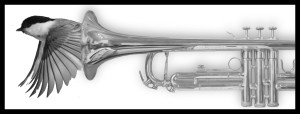”A survey of orchestration treatises reveals the dearth of underlying theory, in sharp contrast to other traditional areas such as harmony and counterpoint […].” Stephen McAdams in Timbre as a structuring force in music (2013)
“[…] orchestration, a field of the purest imagination at the crossing of daring and experience, is still a highly empirical activity like no other in musical writing […] we must admit that orchestration is still too often approached in quite an archaic manner in the age of computer music, and that a rational and scientific approach to it is still to be achieved.” Yan Maresz in On Computer-Assisted Orchestration (2013)
“the art of combining the sounds of a complex of instruments (an orchestra or other ensemble) to form a satisfactory blend and balance” Kreitner et al. on “orchestration and instrumentation” in Grove Music Online (2016)
“In spite of the fact that most writers do not clearly identify principles of orchestration, some are aware of the importance of principles. Gordon Jacob (1977:99) writes that “[e]very piece of music will be found to present its own problems, and it is manifestly impossible to give formulae whereby an infinite number of contingencies may be dealt with.” This idea is stated even stronger by Piston (1980:462) who writes that “[f]ormulas and ‘devices’ are the death of creative orchestration.”” Renier Jacobus Meyer in Principles of Orchestration and the Analysis of Musical Gestures (2012)
“To orchestrate is to create, and this is something which cannot be taught.” Nikolay Rimsky-Korsakov in Principles of Orchestration (posthumt) online
“Orchestration can be defined as the art of combining pitches to compose music for an orchestra or more generally an ensemble. This involves writing for a number of instruments and can be seen as a symbolic view of composing. Furthermore, orchestration is the art of mixing instrumental properties. For example, by combining small sounds from different instruments, the orchestration creates a sound that could not exist on its own.” Antoine & Miranda in “Towards Intelligent Orchestration Systems (2015)
“What Haydn’s work solidify, through their constant working through and development of thematic material, is the idea of orchestration as re-instrumentation. It is through revisiting, remaking, and re-imagining material in different instrumental guises that instrumentation – understood as the division of material among available instruments – turns into orchestration, an active art of developing and manipulating instrumental sonority.” Emily I. Dolan in The orchestral revolution (2012)
There exist a number of classic orchestration treatises (e.g., Berlioz, 1855; Widor, 1904; Rimsky-Korsakov, 1912/1964; Koechlin, 1954-9; Piston, 1955; Adler, 2002). These books tend to offer a survey of acoustic properties of instruments, often according to the instrument family, such as pitch range and timbral characteristics in distinctive registers. They also provide recommended or disparaged instrument combinations with little systematic discussion regarding why certain examples work whereas others do not. There is surprisingly little scientific literature on the implicit principles that might guide composers’ choice of instrument combinations.” Chon, DeVlieger, Huron in Study of Instrument Combination Patterns in Orchestral Scores from 1701 to 2000 (2016)
